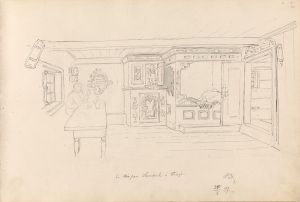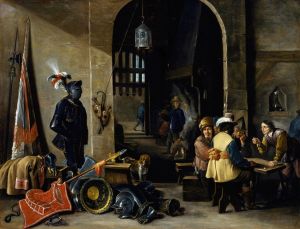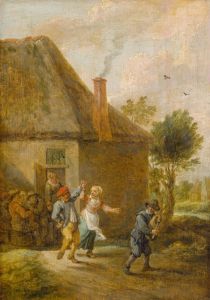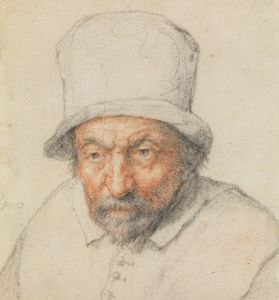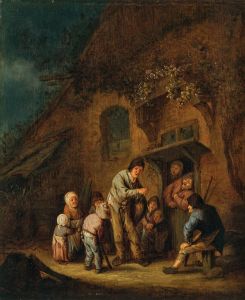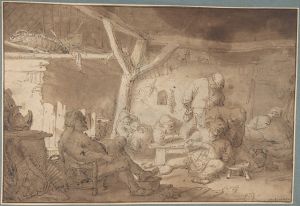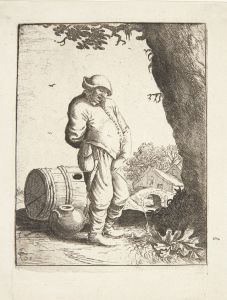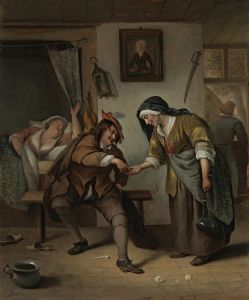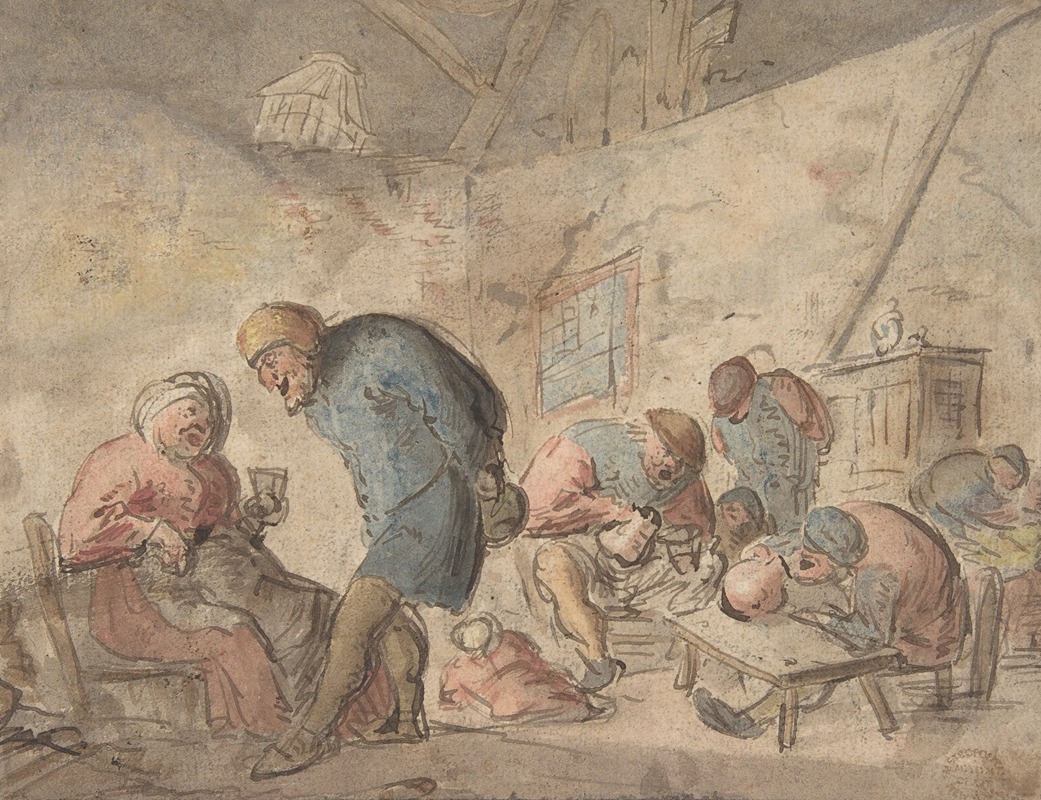
Peasants Drinking
A hand-painted replica of Adriaen van Ostade’s masterpiece Peasants Drinking, meticulously crafted by professional artists to capture the true essence of the original. Each piece is created with museum-quality canvas and rare mineral pigments, carefully painted by experienced artists with delicate brushstrokes and rich, layered colors to perfectly recreate the texture of the original artwork. Unlike machine-printed reproductions, this hand-painted version brings the painting to life, infused with the artist’s emotions and skill in every stroke. Whether for personal collection or home decoration, it instantly elevates the artistic atmosphere of any space.
Adriaen van Ostade was a Dutch Golden Age painter known for his genre scenes depicting peasant life. One of his notable works, "Peasants Drinking," exemplifies his skill in capturing the everyday activities and social interactions of the lower classes in 17th-century Holland. Van Ostade was born in 1610 in Haarlem, where he spent most of his life and career. He was a contemporary of other renowned artists such as Frans Hals and was influenced by the works of Pieter Bruegel the Elder, which is evident in his choice of subject matter and composition.
"Peasants Drinking" is a typical example of van Ostade's work, showcasing his ability to portray rustic interiors and the lively, often boisterous, atmosphere of taverns and inns. The painting features a group of peasants gathered around a table, engaged in drinking and merrymaking. Van Ostade's attention to detail is evident in the depiction of the figures' facial expressions and gestures, which convey a sense of camaraderie and revelry. The artist's use of warm, earthy tones and careful rendering of light and shadow create a cozy, intimate setting that draws the viewer into the scene.
Van Ostade's paintings often include a moralizing element, reflecting the social attitudes of his time. While "Peasants Drinking" primarily serves as a genre scene, it may also subtly comment on the vices and virtues of peasant life. The depiction of drinking and leisure activities could be interpreted as a critique of idleness and excess, common themes in Dutch art of the period. However, van Ostade's treatment of his subjects is generally sympathetic, capturing the humanity and vitality of the peasant class without overt judgment.
Throughout his career, van Ostade produced numerous paintings, drawings, and etchings, many of which focused on similar themes of rural life and peasant festivities. His works were highly sought after during his lifetime, and he enjoyed considerable success and recognition. Van Ostade's influence extended beyond his own time, as his genre scenes continued to be popular among collectors and artists in the centuries following his death in 1685.
"Peasants Drinking" is housed in various collections, with different versions and similar works attributed to van Ostade found in museums and galleries worldwide. His ability to capture the essence of peasant life with humor and empathy has ensured his place as a significant figure in the history of Dutch art. Van Ostade's work provides valuable insight into the social and cultural dynamics of the 17th century, offering a window into the daily lives of people often overlooked in historical narratives.
In summary, Adriaen van Ostade's "Peasants Drinking" is a quintessential example of his genre painting, highlighting his skill in depicting the lively and often humorous aspects of peasant life. Through his detailed and empathetic portrayal of his subjects, van Ostade offers a glimpse into the world of 17th-century Holland, capturing the spirit and character of its people with warmth and authenticity.





